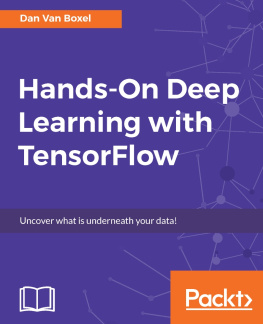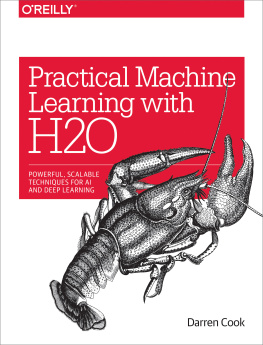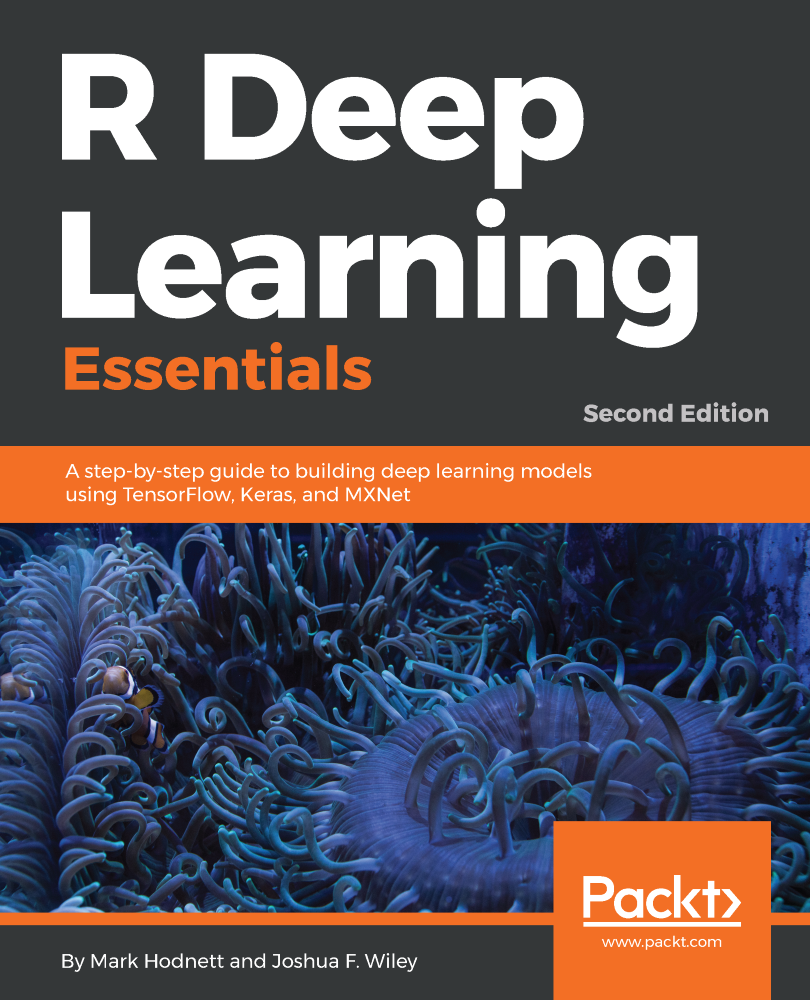Wiley Joshua F - R Deep Learning Essentials: A step-by-step guide to building deep learning models using TensorFlow, Keras, and MXNet
Here you can read online Wiley Joshua F - R Deep Learning Essentials: A step-by-step guide to building deep learning models using TensorFlow, Keras, and MXNet full text of the book (entire story) in english for free. Download pdf and epub, get meaning, cover and reviews about this ebook. City: Birmingham, year: 2018, publisher: Packt Publishing - ebooks Account, genre: Children. Description of the work, (preface) as well as reviews are available. Best literature library LitArk.com created for fans of good reading and offers a wide selection of genres:
Romance novel
Science fiction
Adventure
Detective
Science
History
Home and family
Prose
Art
Politics
Computer
Non-fiction
Religion
Business
Children
Humor
Choose a favorite category and find really read worthwhile books. Enjoy immersion in the world of imagination, feel the emotions of the characters or learn something new for yourself, make an fascinating discovery.

- Book:R Deep Learning Essentials: A step-by-step guide to building deep learning models using TensorFlow, Keras, and MXNet
- Author:
- Publisher:Packt Publishing - ebooks Account
- Genre:
- Year:2018
- City:Birmingham
- Rating:5 / 5
- Favourites:Add to favourites
- Your mark:
R Deep Learning Essentials: A step-by-step guide to building deep learning models using TensorFlow, Keras, and MXNet: summary, description and annotation
We offer to read an annotation, description, summary or preface (depends on what the author of the book "R Deep Learning Essentials: A step-by-step guide to building deep learning models using TensorFlow, Keras, and MXNet" wrote himself). If you haven't found the necessary information about the book — write in the comments, we will try to find it.
Deep learning is a branch of machine learning based on a set of algorithms that attempt to model high-level abstractions in data by using model architectures. With the superb memory management and the full integration with multi-node big data platforms, the H2O engine has become more and more popular among data scientists in the field of deep learning.
This book will introduce you to the deep learning package H2O with R and help you understand the concepts of deep learning. We will start by setting up important deep learning packages available in R and then move towards building models related to neural networks, prediction, and deep prediction, all of this with the help of real-life examples.
After installing the H2O package, you will learn about prediction algorithms. Moving ahead, concepts such as overfitting data, anomalous data, and deep prediction models are explained. Finally, the book will cover concepts relating to tuning and optimizing models.
What you will learn Set up the R package H2O to train deep learning models Understand the core concepts behind deep learning models Use Autoencoders to identify anomalous data or outliers Predict or classify data automatically using deep neural networks Build generalizable models using regularization to avoid overfitting the training data About the AuthorDr. Joshua F. Wileyis a lecturer at Monash University and a senior partner at Elkhart Group Limited, a statistical consultancy. He earned his PhD from the University of California, Los Angeles. His research focuses on using advanced quantitative methods to understand the complex interplays of psychological, social, and physiological processes in relation to psychological and physical health. In statistics and data science, Joshua focuses on biostatistics and is interested in reproducible research and graphical displays of data and statistical models. Through consulting at Elkhart Group Limited and his former work at the UCLA Statistical Consulting Group, Joshua has helped a wide array of clients, ranging from experienced researchers to biotechnology companies. He develops or codevelops a number of R packages including varian, a package to conduct Bayesian scale-location structural equation models, and MplusAutomation, a popular package that links R to the commercial Mplus software.
Table of Contents Getting Started with Deep Learning Training a Prediction Model Preventing Overfitting Identifying Anomalous Data Training Deep Prediction Models Tuning and Optimizing Models BibliographyWiley Joshua F: author's other books
Who wrote R Deep Learning Essentials: A step-by-step guide to building deep learning models using TensorFlow, Keras, and MXNet? Find out the surname, the name of the author of the book and a list of all author's works by series.






